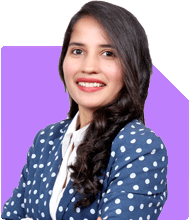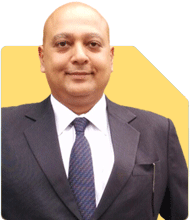I am 53 yrs and having a monthly salary of 1lakh , having a SIP of 70000 per month and having a pf of 6 lakh
How I can plan my investment
Ans: Financial Planning for a 53-Year-Old: An In-Depth Guide
Planning your investments at 53 requires a strategic approach. Your monthly salary is Rs 1 lakh, and you have an impressive SIP of Rs 70,000 per month. Additionally, you have a provident fund (PF) of Rs 6 lakh. With careful planning, you can ensure a secure financial future.
Assessing Your Current Financial Situation
First, let's review your current financial situation. Your income and investments are crucial for future planning.
Monthly Salary: Rs 1 lakh
Your monthly income is a significant factor in your financial planning. It forms the basis for your savings, investments, and expenses.
SIP: Rs 70,000 per month
Your SIP investment shows a strong commitment to long-term wealth creation. SIPs are a disciplined way to invest, averaging out market volatility. With such a substantial monthly investment, you have the potential to accumulate significant wealth over time.
Provident Fund: Rs 6 lakh
Your PF balance of Rs 6 lakh is an essential part of your retirement corpus. Provident funds offer a secure and tax-efficient way to save for retirement.
Establishing Financial Goals
Define clear financial goals. Consider short-term, medium-term, and long-term objectives.
Short-Term Goals: Emergency fund, home renovations, vacations.
Short-term goals are those that you aim to achieve within the next few years. These goals typically require relatively smaller amounts of money and can be funded through regular savings or short-term investments.
Medium-Term Goals: Children’s education, marriage expenses.
Medium-term goals typically have a time horizon of 5-10 years. These goals require more significant financial planning and may involve investments in instruments with moderate risk levels.
Long-Term Goals: Retirement planning, health care needs.
Long-term goals are those that you aim to achieve over a longer time horizon, typically 10 years or more. These goals require careful planning and disciplined investing to ensure that you accumulate the necessary corpus by the time you need it.
Each goal requires different strategies. Aligning your investments with these goals will provide direction.
Building an Emergency Fund
An emergency fund is essential. It provides a safety net during unexpected situations.
Recommendation: Save 6-12 months of expenses.
Strategy: Keep this fund in a savings account or liquid funds for easy access.
An emergency fund acts as a financial cushion during unforeseen events such as job loss, medical emergencies, or major repairs. By setting aside a portion of your income in a liquid account, you can ensure that you are prepared to handle any financial emergencies without having to dip into your long-term investments.
Reviewing Your Provident Fund
Your PF of Rs 6 lakh is a significant amount. It provides financial security and helps in retirement planning.
Consideration: Avoid withdrawing PF unless necessary. PF accumulates interest over time, providing substantial benefits.
Provident funds are one of the most popular retirement savings options in India due to their tax benefits and guaranteed returns. By contributing regularly to your PF and letting it grow over time, you can build a substantial corpus for your retirement years.
Evaluating Your SIP Investments
You are investing Rs 70,000 per month in SIPs. SIPs are excellent for rupee cost averaging and long-term growth.
Recommendation: Ensure your SIPs are diversified across various sectors and market capitalizations.
Strategy: Regularly review and rebalance your SIP portfolio to align with your risk tolerance and goals.
Systematic Investment Plans (SIPs) are a popular investment option for retail investors due to their simplicity and affordability. By investing a fixed amount regularly in mutual funds, you can benefit from the power of compounding and rupee cost averaging, which can help you accumulate wealth over the long term.
Importance of Diversification
Diversification reduces risk and enhances returns. Invest in a mix of equity, debt, and hybrid funds.
Equity Funds: High growth potential, suitable for long-term goals.
Debt Funds: Stability and lower risk, ideal for short to medium-term goals.
Hybrid Funds: Balanced approach, combining equity and debt.
Diversification is a fundamental principle of investing that aims to spread your investment risk across different asset classes and sectors. By diversifying your investment portfolio, you can reduce the impact of any single investment's poor performance on your overall portfolio returns.
Retirement Planning
Retirement planning is crucial at this stage. You need to ensure a comfortable and secure retirement.
Estimation: Calculate the corpus required for retirement considering inflation and lifestyle.
Investment Strategy: Increase contributions to your retirement fund. Consider equity and hybrid funds for higher growth.
Retirement planning involves estimating the amount of money you will need to maintain your desired standard of living after you retire and then working backward to determine how much you need to save each month to achieve that goal. By starting early and investing regularly in retirement-oriented investment vehicles, you can build a substantial corpus for your golden years.
Health Care Planning
Healthcare costs can be substantial in retirement. Plan for medical emergencies and regular health expenses.
Health Insurance: Ensure adequate health insurance coverage. Consider a higher sum insured with critical illness coverage.
Health Savings Fund: Create a separate fund for medical expenses. Use debt funds or fixed deposits for this purpose.
Healthcare planning is an essential aspect of financial planning, especially as you age and your healthcare needs increase. By investing in a comprehensive health insurance policy and setting aside funds for medical emergencies, you can ensure that you are prepared to meet any healthcare expenses that may arise in the future without putting a strain on your finances.
Tax Planning
Efficient tax planning can save a significant amount of money. Utilize tax-saving instruments to reduce your tax liability.
Section 80C: Invest in ELSS, PPF, or NSC to claim deductions up to Rs 1.5 lakh.
Section 80D: Avail tax benefits on health insurance premiums for yourself and family.
Tax planning is an integral part of financial planning and involves structuring your finances in a way that minimizes your tax liability while maximizing your post-tax returns. By taking advantage of various tax-saving instruments and deductions available under the Income Tax Act, you can reduce your tax burden and increase your disposable income.
Reviewing Insurance Policies
Evaluate your existing insurance policies. Ensure they provide adequate coverage.
Life Insurance: Check if the sum assured is sufficient to cover your family’s needs.
ULIPs and Endowment Policies: Consider surrendering these policies if they are not performing well. Reinvest the proceeds in mutual funds for better returns.
Insurance planning is an essential component of financial planning and involves assessing your insurance needs and ensuring that you have adequate coverage to protect yourself and your loved ones against unforeseen events. By reviewing your existing insurance policies periodically and making necessary adjustments, you can ensure that you are adequately covered and that your insurance portfolio remains aligned with your financial goals.
Benefits of Actively Managed Funds
Avoid index funds and direct funds. Actively managed funds, through a Certified Financial Planner, offer several benefits.
Professional Management: Experienced fund managers make informed decisions.
Higher Returns: Actively managed funds have the potential to outperform the market.
Regular Monitoring: Regular reviews and adjustments ensure alignment with financial goals.
Actively managed funds are mutual funds in which fund managers actively make investment decisions with the aim of outperforming the market and generating higher returns for investors. By investing in actively managed funds through a Certified Financial Planner (CFP), you can benefit from professional management and expertise. Certified Financial Planners are trained professionals who can help you navigate the complexities of the financial markets and make informed investment decisions that align with your financial goals and risk tolerance.
Creating a Withdrawal Strategy
A well-planned withdrawal strategy ensures you don’t outlive your savings.
Systematic Withdrawal Plan (SWP): Use SWPs in mutual funds to create a regular income stream during retirement.
Staggered Withdrawals: Avoid withdrawing large amounts at once to reduce tax liability and maintain growth potential.
Creating a withdrawal strategy is essential to ensure that you can sustain your lifestyle in retirement without depleting your savings too quickly. By implementing a systematic withdrawal plan (SWP) in mutual funds or staggering your withdrawals over time, you can generate a steady income stream while preserving the principal amount for future growth.
Estate Planning
Estate planning ensures your assets are distributed according to your wishes.
Will: Draft a will to specify how your assets should be distributed.
Nominees: Ensure all investments and accounts have updated nominee details.
Trust: Consider setting up a trust for more complex estate planning needs.
Estate planning is the process of arranging for the transfer of your assets to your heirs or beneficiaries after your death. By creating a will, designating nominees for your investments and accounts, and setting up trusts for more complex estate planning needs, you can ensure that your assets are distributed according to your wishes and that your loved ones are provided for after you're gone.
Continuous Monitoring and Review
Regularly monitor and review your financial plan. Adjust strategies as needed to stay on track with your goals.
Annual Review: Conduct a thorough review of your financial plan at least once a year.
Life Changes: Update your plan for any significant life changes such as marriage, birth, or change in employment.
Continuous monitoring and review of your financial plan are essential to ensure that it remains aligned with your goals and objectives. By conducting an annual review and updating your plan for any significant life changes, you can make necessary adjustments to your investment portfolio and financial strategy to adapt to changing circumstances and stay on track towards achieving your long-term financial goals.
Conclusion
In conclusion, planning your investments at 53 is crucial for a secure future. Your current SIPs, provident fund, and monthly salary form a strong foundation for your financial plan. By diversifying your investments, planning for retirement and healthcare, and making informed decisions with the help of a Certified Financial Planner, you can achieve your financial goals and enjoy a comfortable and secure financial future.
Best Regards,
K. Ramalingam, MBA, CFP,
Chief Financial Planner,
www.holisticinvestment.in













.jpg)
















